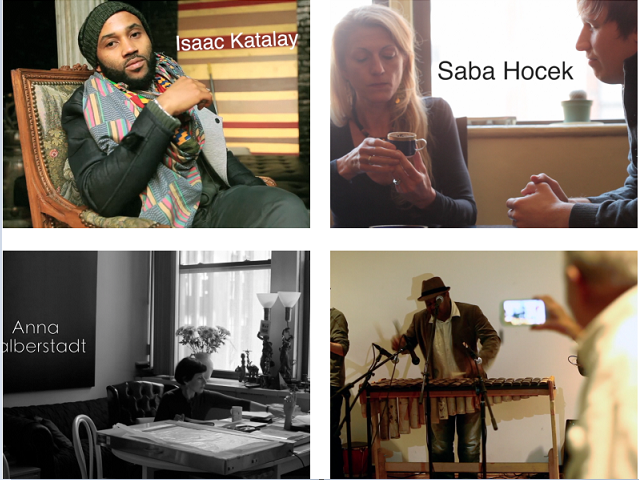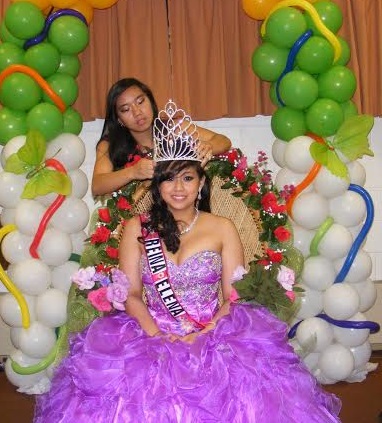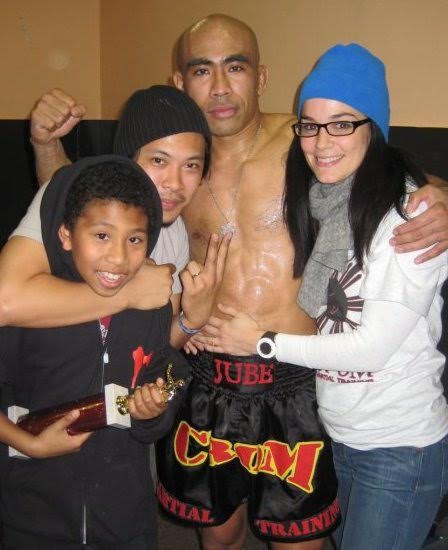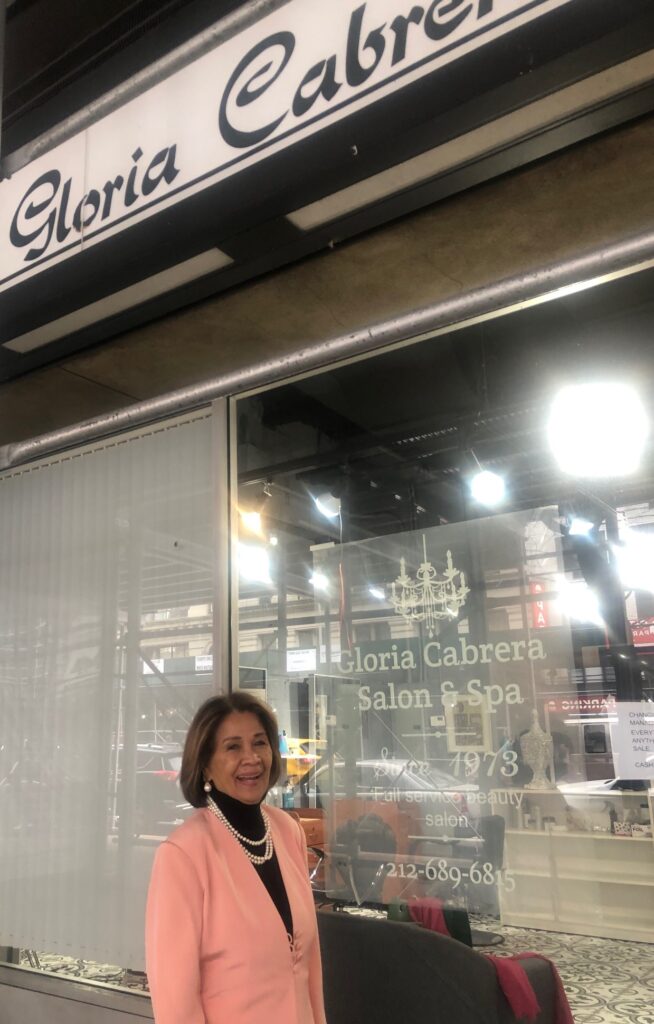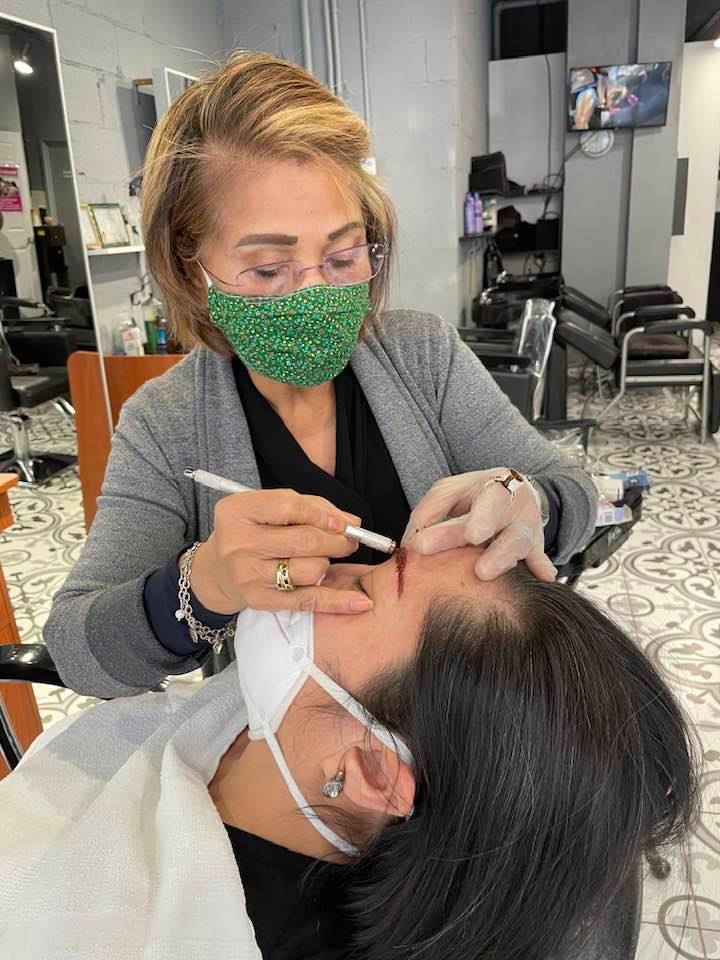Gloria Cabrera considers her options as salon turns 50
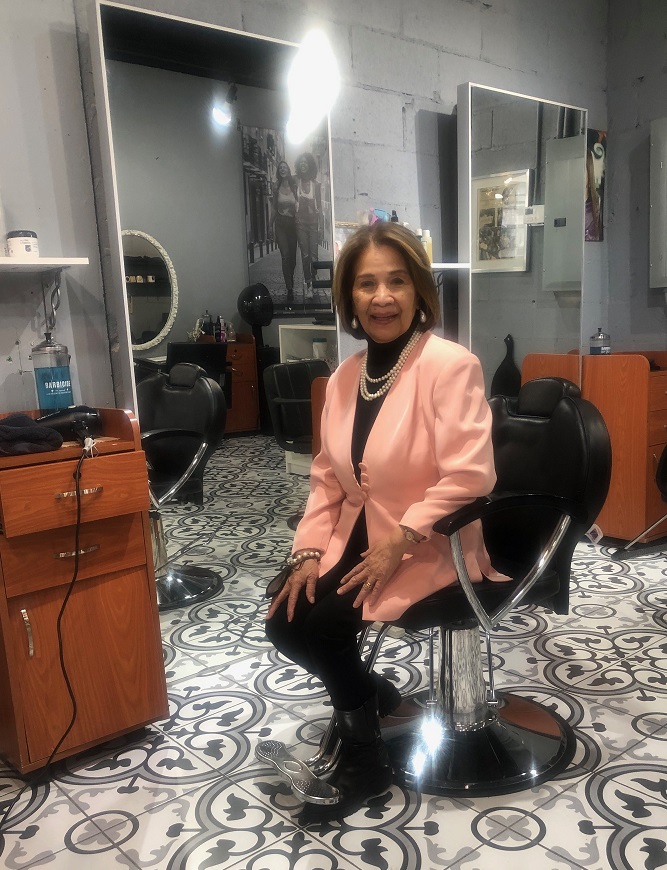
By Cristina DC Pastor
Hairstylist Gloria Cabrera came to the United States in the 1960s when it was still relatively easy for Filipinos to immigrate to America. The 1965 Immigration Act paved the way for certain immigrants who were educated or had special skills.
“A lot of my clients (in the Philippines), they ask me ‘Glo, why don’t you come to the USA. Salons in America don’t know how to take care of the oriental hair.’ I said only doctors and rich people go there.” That was her constant reply to suggestions that she come to the U.S. Despite the lure of making more money in America, Gloria was happy to be running GloTud’s salon in Manila’s busy Divisoria district with her cousin Tuding, her business partner.
But part of her was curious to see what life in the U.S. would be like.. In 1967, she packed her bags and headed for New York, traveling with two friends who wanted to try their luck abroad. Gloria remembers staying in the cramped 123 Hotel in Manhattan, a transient lodging for newly arrived visitors and tourists. Never did she imagine that one day she would open a popular salon & spa in Manhattan and do the hair and makeup for former Philippine presidents Cory Aquino and Gloria Macapagal Arroyo before they delivered foreign policy speeches at the UN General Assembly.
Photos scattered in her Manhattan apartment show the younger Gloria with upswept hair looking like a Filipina beauty queen. She was always stylishly dressed, her face with casual, never heavy, make-up. It didn’t take long for her to find work on the recommendation of the nephew of a friend.
“It was a big salon in the East Village with high-end customers. The owner is Italian,” she told The FilAm. “I did manicure and shampoo, I had no license. When you have no license you cannot do hair. I worked night shifts.”
One day the owner of the salon saw how beautifully she transformed women’s hair with a pair of scissors. He urged her to go to night school, get some additional training and a license so she could cut and style hair. Because of her experience as a hairstylist in the Philippines, she was only required to attend 300 hours of classes instead of the full course of 1,000 hours, she said.
1973 was a big year for Gloria. First, she married her boyfriend Ben Cabrera, an aeronautical engineer. Later in the year, the young couple – hard-working immigrants with some money saved — opened Gloria Cabrera’s Salon & Spa (GSS) in Manhattan’s Gramercy area. Ben ran the business while Gloria serviced clients. It was a hit.
Emboldened by their success, they opened two more locations, one on Fifth Avenue and the other on 40th Street. They would later close the two stores when it became too unwieldy for Gloria and Ben to manage as they were raising a family. They decided to keep the original location because they lived in the same building on East 23rd Street.
“I met many nurses. Filipino nurses were my biggest customers,” she said.
That was in the beginning, she said, as word-of-mouth drove the business. Today, about 80 percent of her customers are non-Filipinos. Gloria’s vision to open in Manhattan, known for its stratospheric rents, paid off. Despite higher prices for hair, makeup and spa services than salons in other boroughs, the business flourished.
Over time, Gloria and her husband became prominent Filipino American business owners in New York. While some FilAms made a good living working as nurses, doctors, and engineers, the Cabreras were the rarity who did splendidly as entrepreneurs. They won awards for their business acumen and became models who embodied the Filipino immigrant success story.
“Gloria Cabrera is a professional hairstylist and very passionate about her craft,” said businessman and CEO of Fiesta In America Fernando Mendez who has been a customer for almost two decades. “She loves her work and her clients love her.”
Pandemic came
When the pandemic hit in 2020, GSS was in its 46th year. The horrors of the pandemic as well as Ben’s death a couple of years earlier made Gloria reflect on the business and the huge responsibility of running it by herself. What’s kept her going, she said, was her devotion to her clients and the thought that, “Where would I go?” She made a wager with herself to just get to 50 years and to retire after that.
For almost two years, customers had stopped coming, afraid of getting infected with the virus. Some never returned.

“We call them (to remind them of their hair appointments). When they don’t answer that means they have died,” Gloria said in a soft voice. She paused as she searched her memory, smiled as she recalled beloved customers who became her friends and those who tipped generously.
“People were letting their hair grow and not coming for haircuts,” she mused, a horrified look on her face. “They were letting their hair grow white.”
One couldn’t exactly blame them. Coloring their hair seemed so frivolous when people were gasping for breath in hospital ICUs struggling to stay alive.
For three months in 2020, when the pandemic was at its most dire, Gloria was forced to close her salon. She sought comfort in her family in Maryland. In the company of her daughter, son-in-law and two grandchildren, she examined her options.
The salon reopened after three months and after her landlord agreed to reduce her rent.
“I pleaded with my landlord that if I pay the amount on the lease I could not survive. My landlord was very nice to me and reduced the rent,” she said.
Gloria applied for pandemic-related financial assistance. She was awarded $3,000 from a program run by the U.S. Department of Treasury.
“$3,000? What is that?” she asked with sarcasm. She applied for another program that gave her $600 a week in unemployment benefits for two years. It was a lifeline that allowed her to pay the reduced rent.
To this day, Gloria has not gone back to her original lease, thanks to an understanding landlord. Her savings helped cover some of the expenses, paying the salaries of her staff of six, as well as paying for supplies and utilities.
“At least we were able to survive,” she declared with a sense of satisfaction.
But the salon has not recovered the pre-pandemic volume of customers. Many customers have been doing their own beauty treatments, like manicure and hair touch-ups, at home. Also, the salon observed social distancing by requiring customers to call for appointments; walk-ins are discouraged.
Young Korean customer
A young Korean customer gave the salon a shot in the arm amid the pandemic. This woman liked how Gloria expertly trimmed her spiked hair. After a couple of visits, the two became friends. The woman, who happens to be a web developer, offered to redesign the salon’s website and make it more millennial-friendly. She also connected the salon to a community of young people. Her young customers gave GSS good ratings online. To show her appreciation, Gloria gave them a “small discount.” She is thrilled to see her salon catering to a more diverse clientele that includes younger men and women.
“That’s what I need, I need young people,” she said. “It helped me recover but we’re still not the same as before.”
On the 50th year of GSS, Gloria finds herself at a crossroads. She is not thrilled about parting ways with her salon, but at the same time she craves more time for herself and her family. She sees herself doing a lot of traveling with friends, but also regrets not being able to serve long-time clients. She hopes that whoever buys her salon will be kind enough to let her continue working part-time. That will make her very happy.
This story was produced as part of the Small Business Reporting Fellowship, organized by the Center for Community Media and funded by the NYC Mayor’s Office of Media and Entertainment.


